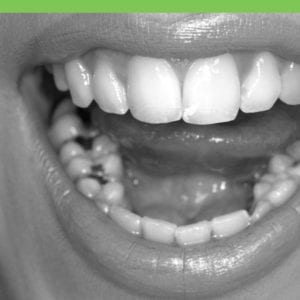 According to the U.S. Food and Drug Administration, dental amalgam is approximately 50% of elemental mercury by weight.
According to the U.S. Food and Drug Administration, dental amalgam is approximately 50% of elemental mercury by weight.
By volume, a conventional dental amalgam alloy will contain between 67% and 74% silver, with 25-28% tin, and up to 6% copper, 2% zinc and 3% mercury.
The chemical properties of elemental mercury allow it to react with and bind together the silver/copper/tin alloy particles to form an amalgam.
Dental amalgam fillings are also known as “silver fillings” because of their silver-like appearance.
The FDA cites two benefits, saying amalgam fillings are:
- strong and long-lasting, less likely to break than some other types of fillings
- the least expensive type of filling material
On the negative side, the potential risks the FDA cites are:
- Dental amalgam contains elemental mercury.
- It releases low levels of mercury in the form of a vapor that can be inhaled and absorbed by the lungs.
- High levels of mercury vapor exposure are associated with adverse effects in the brain and the kidneys.
- Dental amalgam might cause individuals with an allergy to components of amalgam to develop oral lesions or other contact reactions.
That being said, the FDA considers them to be safe. But the FDA’s advisory panel on dental amalgam in December 2010 warned against the use of amalgam in vulnerable populations and insisted that FDA had a duty to disclose amalgam’s risks to parents and consumers.
This is a controversial subject, and one of the most vexing issues in dentistry today, centering on how much mercury is released from amalgam fillings and how much the body absorbs. The research is complex, and there are many different estimates on the amount of mercury released, and accumulated in the body.
Some find it very ironic that regulatory agencies require that the materials that make up an amalgam filling must be placed in a hazardous waste container when they are removed from a tooth, but are considered safe inside the mouth.
Is there a Safe Level of Mercury?
The World Health Organization (WHO) has stated that there is no – zero — safe level of mercury. Mercury is the most poisonous, non-radioactive, naturally occurring substance on our planet, and it is said that the fact is, mercury can directly or indirectly cause, contribute to, or make worse every health issue we will ever deal with. Perhaps the good news is that with the development of alternative materials, for dental fillings, the use of amalgam has been greatly reduced, and approximately 50 percent of dentists in the USA are now mercury-free.
At least 100 symptoms are said to directly or indirectly result from chronic mercury poisoning. Symptoms that worsen over time may signal the development of a disease. The number and severity of symptoms depend on a variety of factors, such as;
- how many fillings you have;
- how long you’ve had them;
- how they are stimulated (chewing, teeth-grinding, and consumption of hot liquids);
- how often they are stimulated;
- placement, replacement, and removal of amalgam fillings.
In addition, because mercury is classified as a neurotoxin it can also cause or contribute to emotional and psychological issues, such as depression, anxiety, mood swings and memory loss. Since mercury can indirectly cause harm by depleting essential antioxidants, such as glutathione and alpha lipoic acid that are needed to remove it and deal with other harmful toxins and free radicals, it can indirectly be contributing to an unknown number of symptoms and diseases.
The highest amount of mercury exposure from silver fillings occurs when they are placed and when they are removed from our mouths. Removal of amalgam fillings without safety measures has the potential to expose everyone in the dental procedure room to exceed the safety limit of mercury exposure. An organization composed mostly of dentists, the IAOMT (the International Academy of Oral Medicine and Toxicology), has published extensive safe amalgam removal protocol recommendations (SMART: Safe Mercury Amalgam Removal Technique).
The IAOMT recommends that amalgam filling not be removed in women who are pregnant or breast-feeding, and that dental personnel who are pregnant or breast-feeding not conduct work that disrupts amalgam fillings (including their removal).
Some of the things that need to be done to keep you safe during an amalgam removal include:
- Providing you with an alternative air source and instructing you not to breathe through your mouth
- Using a cold-water spray to minimize mercury vapors
- Putting a dental dam in your mouth so you don’t swallow or inhale any toxins
- Using a high-volume evacuator near the tooth at all times to evacuate the mercury vapor
- Washing your mouth out immediately after the fillings have been removed (the dentist should also change gloves after the removal)
- Immediately cleaning your protective wear and face once the fillings are removed
- Using room air purifiers
There is a serious environmental problem with amalgam fillings, that have been identified as a major source of mercury pollution. Wastewater authorities around the world have collectively identified dental offices as the major source of mercury pollution in municipal wastewater, and regulatory action is in place in many jurisdictions requiring dental offices to install mercury separators on their waste water lines, but they are not required by the United States government. In Canada, dental amalgam is estimated to contribute one-third of the mercury in sewer system waste, but it is believed amalgam separators in dental offices may dramatically decrease this burden on the public sewer system.
Some dental clinics offer safe mercury-removal programs with special equipment that reduces mercury vapor exposure.
If you are interested in mercury filling removal in Costa Rica, fill out the “Find a Dentist” form on this page. One of our patient advocates will reply to your needs.
